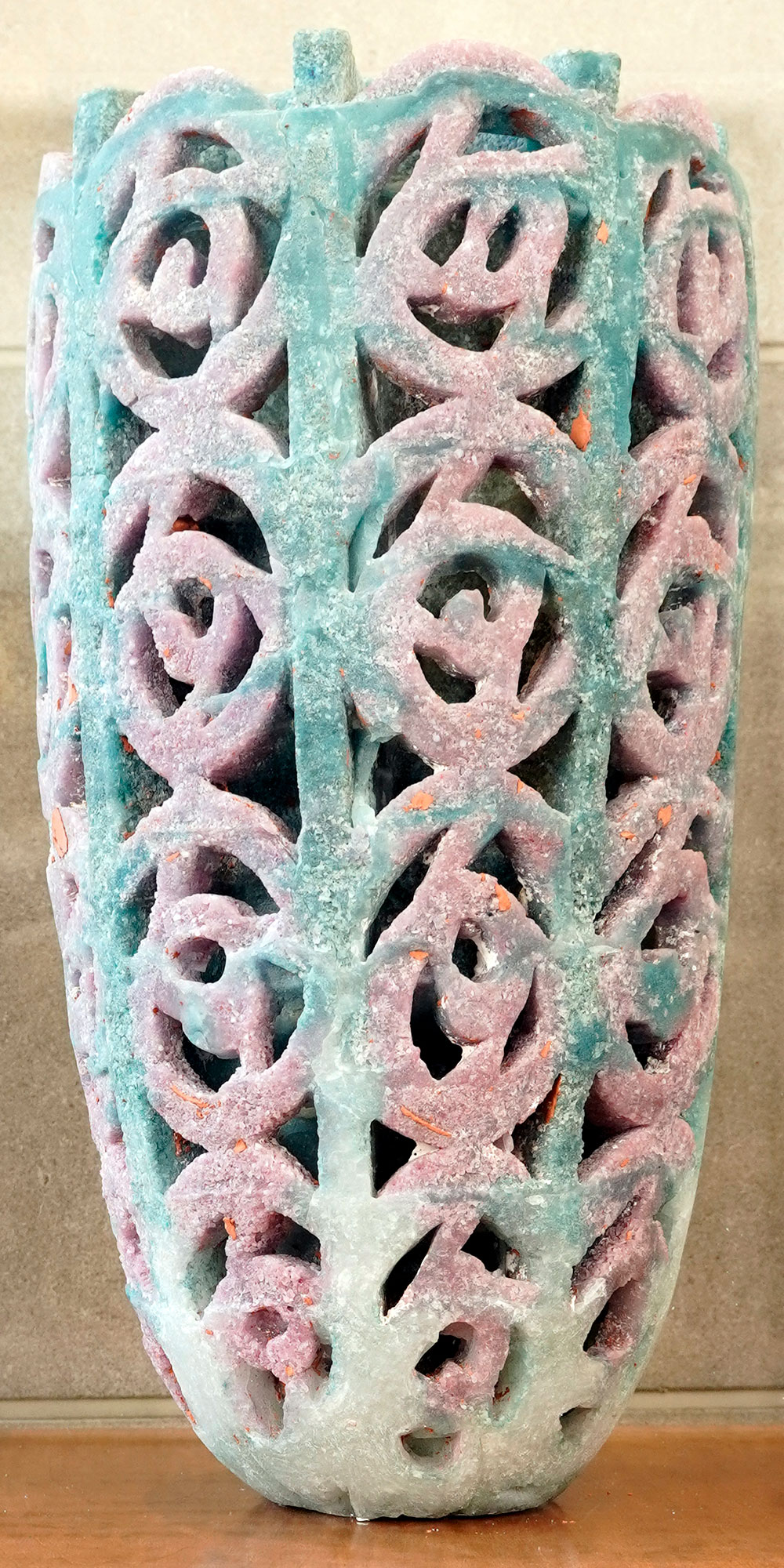Stone Rosette
One of Karla Trinkley's major influences was the archeological collection of the University of Pennsylvania Museum. There, she first saw examples of the ancient Egyptian glass-casting technique called pâte de verre, which translates into "glass paste." Later, as a graduate student in the early 1980s, she invented a scientific method to produce cast glass. Today, Trinkley is an acknowledged master of the technique.
Stone Rosette exemplifies the soft, waxy colors, gritty texture, and inner-core design of Trinkley's cast-glass work of the early 1990s. It has the air of a recently unearthed antiquity. In one sense, its title is a straightforward reference to the circular floral motif used throughout. But, the name also alludes playfully to the Rosetta stone, the block of glass-like basalt that supplied the key to deciphering Egyptian hieroglyphics.
Stay in Touch
Sign up to receive news about the PCC Art Collection at the Pennsylvania Convention Center.

